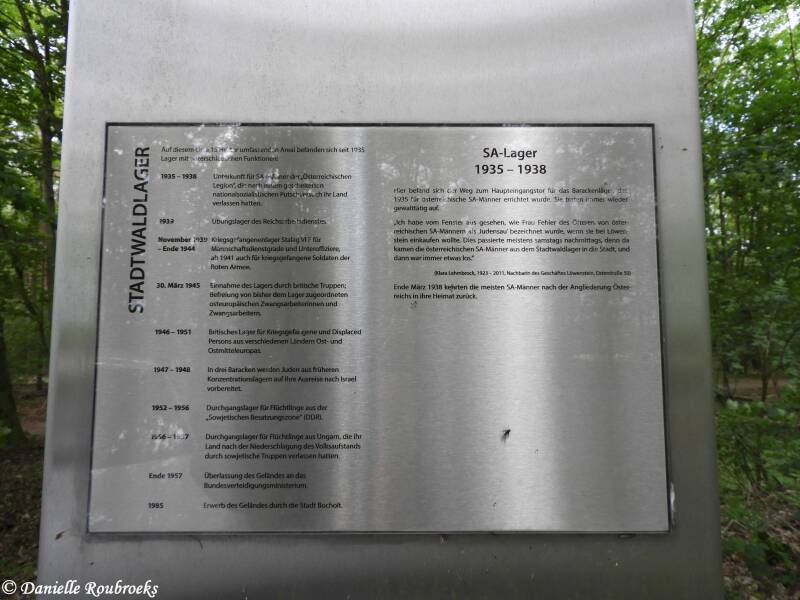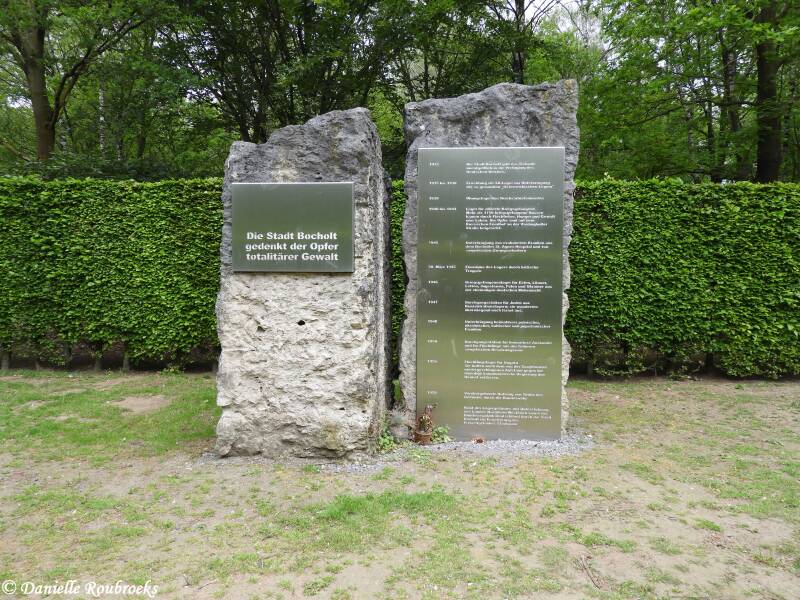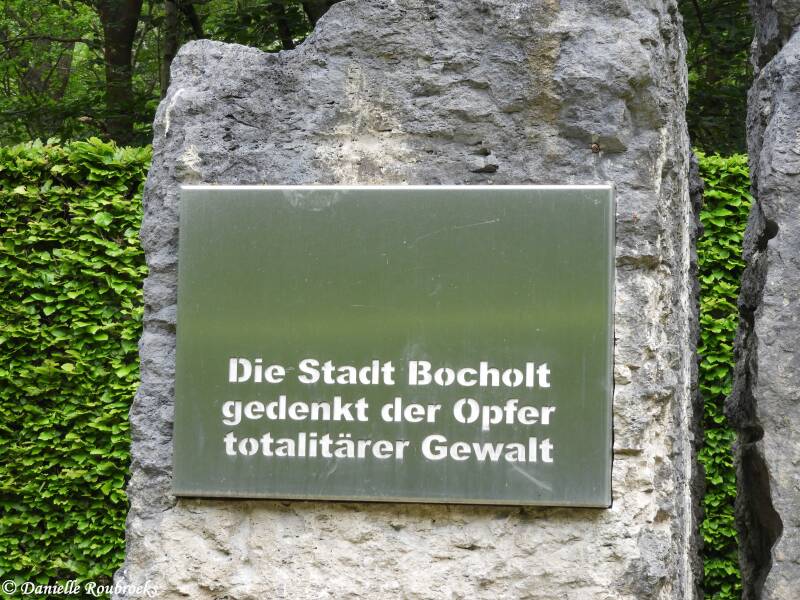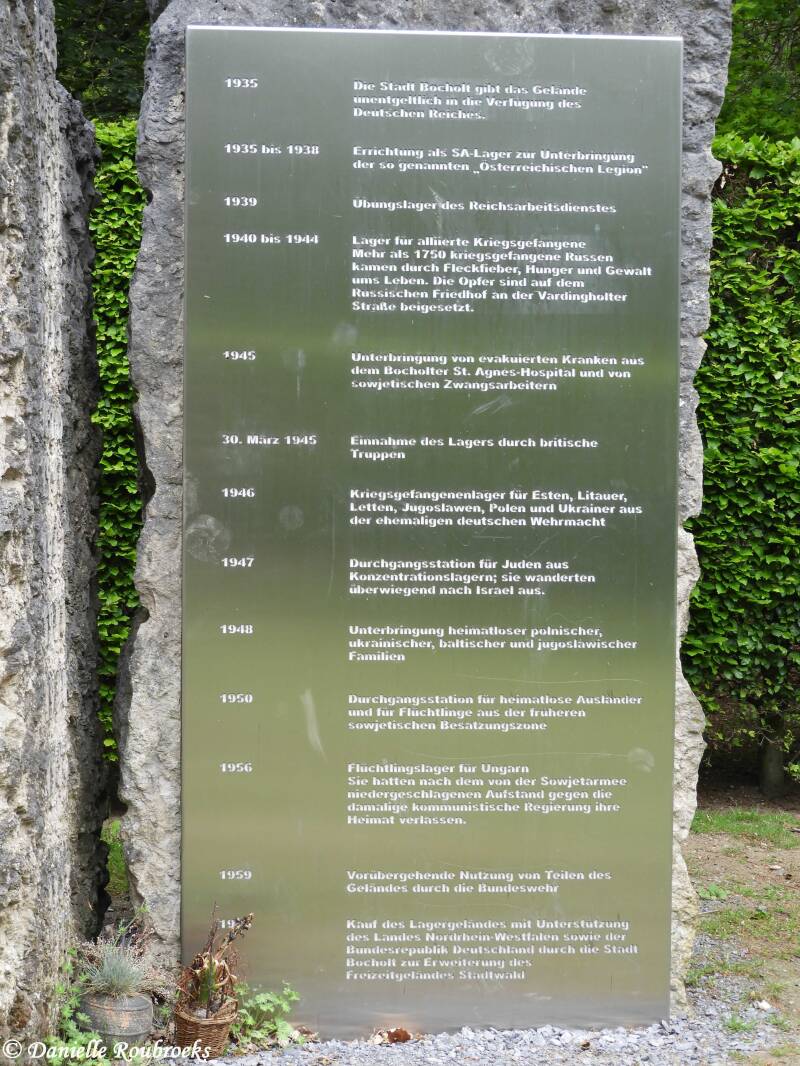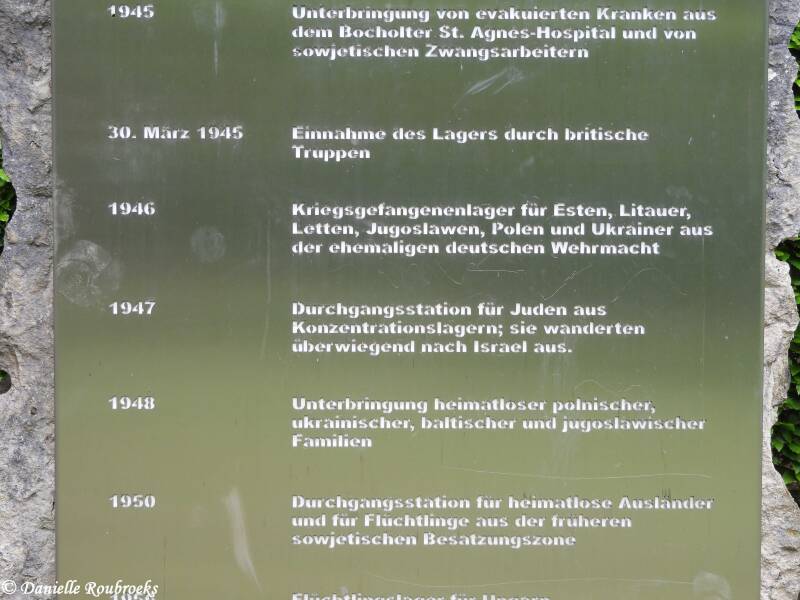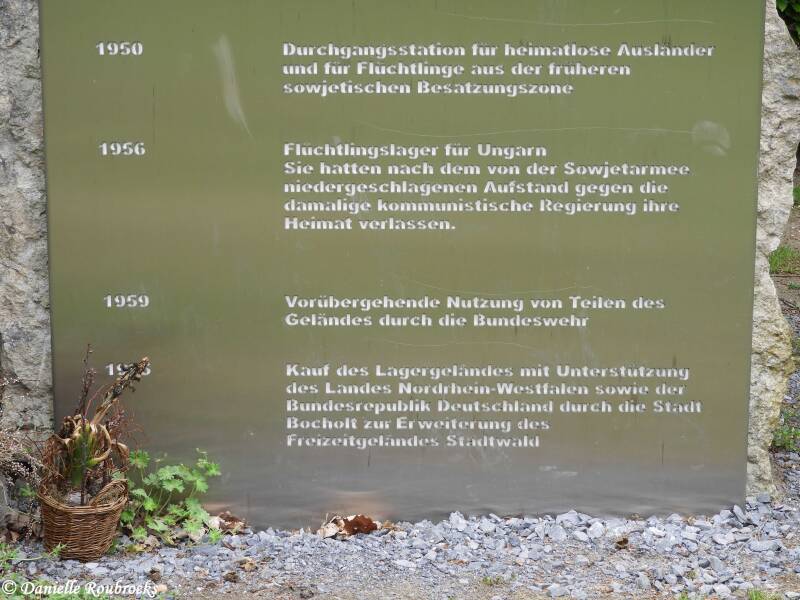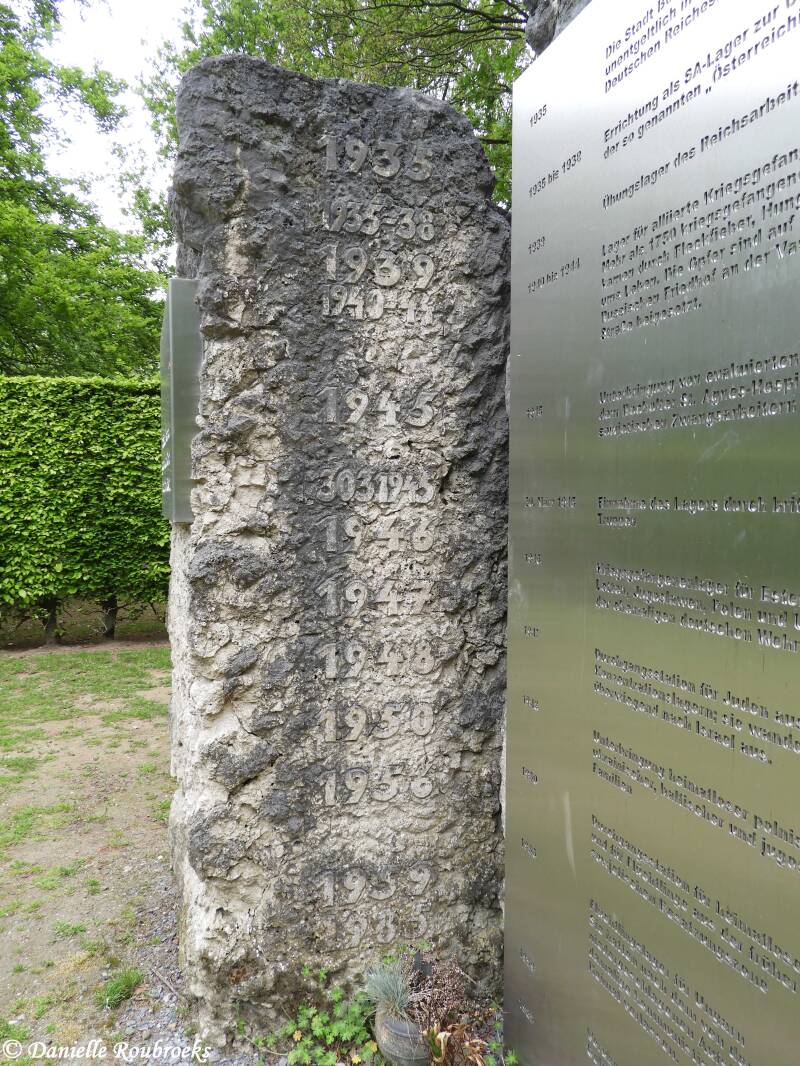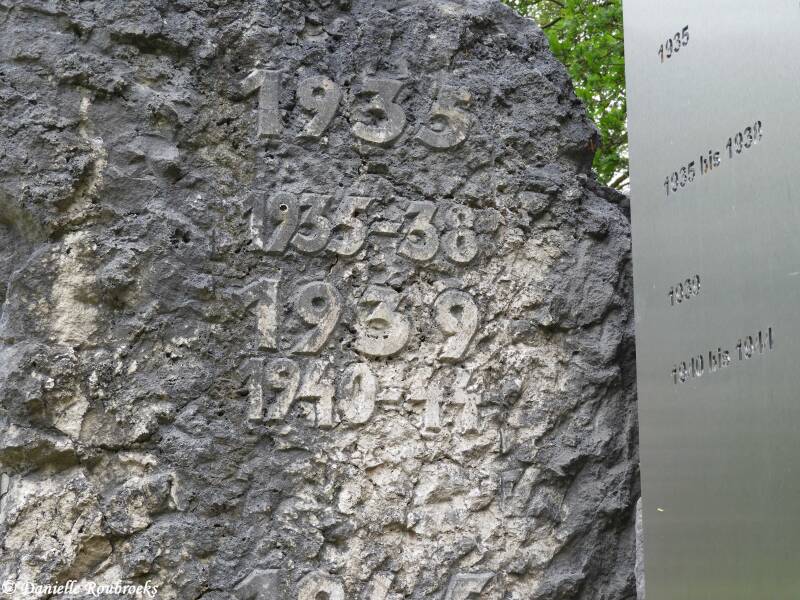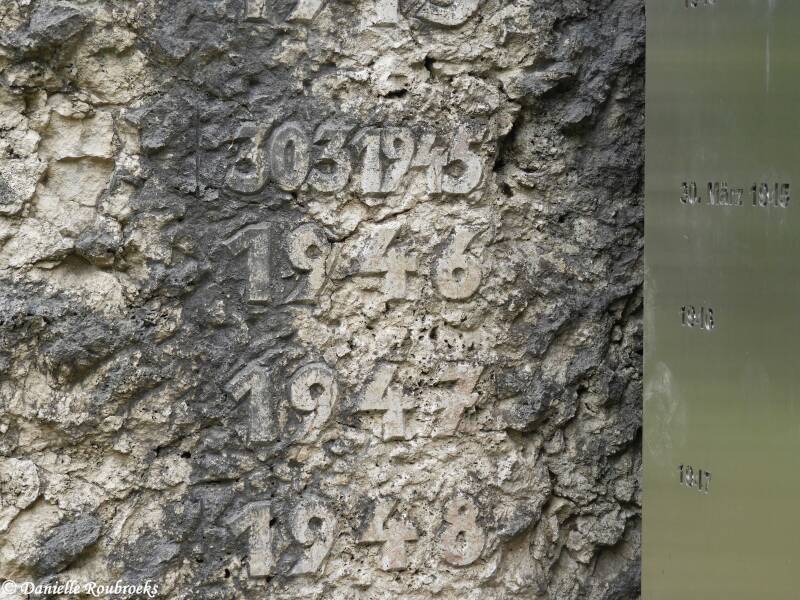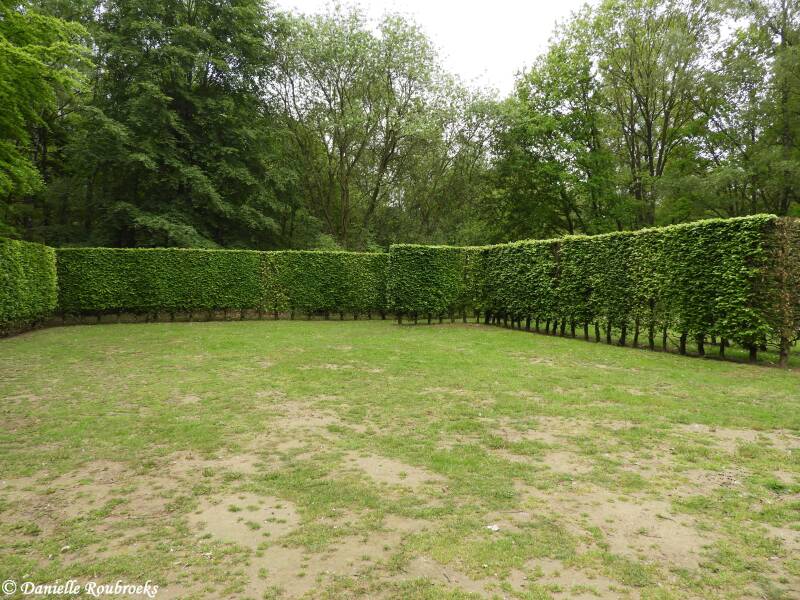Bocholt Stadtwaldlager
History Information: Volksbund
Data on the history of the "city forest camp Bocholt", to which a memorial stone reminds:
1935: Establishment of the camp by the NSDAP, Hilfswerk Nordwest (Bad Godesberg), for refugee Austrian SA men (so-called Austria Legion).
1938: After the invasion of German troops in Austria on March 12, 1938 and the annexation of Austria to Germany evacuation of the camp; Return of the Legion to Austria.
Sale of the camp buildings by the NSDAP to the Reichsfiskus (army).
September 27: Conclusion of a garrison agreement between the city of Bocholt and the Reichsfiskus (army). Transfer of property for the warehouse. The camp was used for housing and training short-term recruits. Not far from the camp, a shooting range was created, an exercise area in the Hohenhorster mountains was provided. The camp has hardly served this purpose.
1939 March 27: The city chronicle records that 2,000 members of the Reich Labor Service (RAD) are temporarily housed in the camp. After the beginning of the Second World War, the camp served as a POW camp and as a transit camp. In November, the first 400 Polish POWs entered the camp, followed by others.
1940 from May: the first prisoners from the Western Front arrived; first Dutchmen, then Belgians, then Frenchmen, Englishmen, etc. In October, temporary billeting of German troops (6th Company, 2nd Battalion, Infantry Regiment 626).
1941 27th November: the first 800 Russian prisoners of war arrived, followed by many thousands later. The camp was considerably enlarged by emergency barracks.
1944 September. After the landing of English paratroopers in the Arnhem area Bocholt belonged to the rear front area. The prisoner of war camp was moved further east. Schanz workers moved into the camp for the Westphalia Wall, and later their staff.
1945 March 22nd to 25th: accommodation of sick people from the destroyed St. Agnes Hospital after the Air raid on the city. March 30: Capture of the camp by British troops.
April: After occupation of the city Bocholt collection camp for foreign workers, in particular Russians, up to their return to the homeland
1946 September: 2,500 Estonians, Latvians and Lithuanians moved into the camp.
1947 January: Jews from the camp Bergen-Belsen (mostly Poland, Hungary and Romanians) were here in the Camp for an emigration to Israel merged.
1950 May Yugoslav refugee families came to the camp.
April. The Ministry of Labor and Social Affairs of the country NWR took over the leadership of the camp from the British military government,
1951 September: The DP camp (= Displaced Persons, Homeless or Forced Foreigners) under German leadership was lifted. But there were still a number of families live there until the other accommodation.
1952 December: Establishment of the camp as the main transit camp for refugees from the Soviet Zone.
1956 21 November: the first refugees from Hungary, who had left their homes in the wake of the Hungarian uprising, arrived.
1959 Temporary use of parts of the site by the Bundeswehr.
1985 Purchase of the camp site by the city of Bocholt for the extension of the recreational area Stadtwald.
The history of the "Bocholt city forest camp" reminds and commits to peace - all of us!


